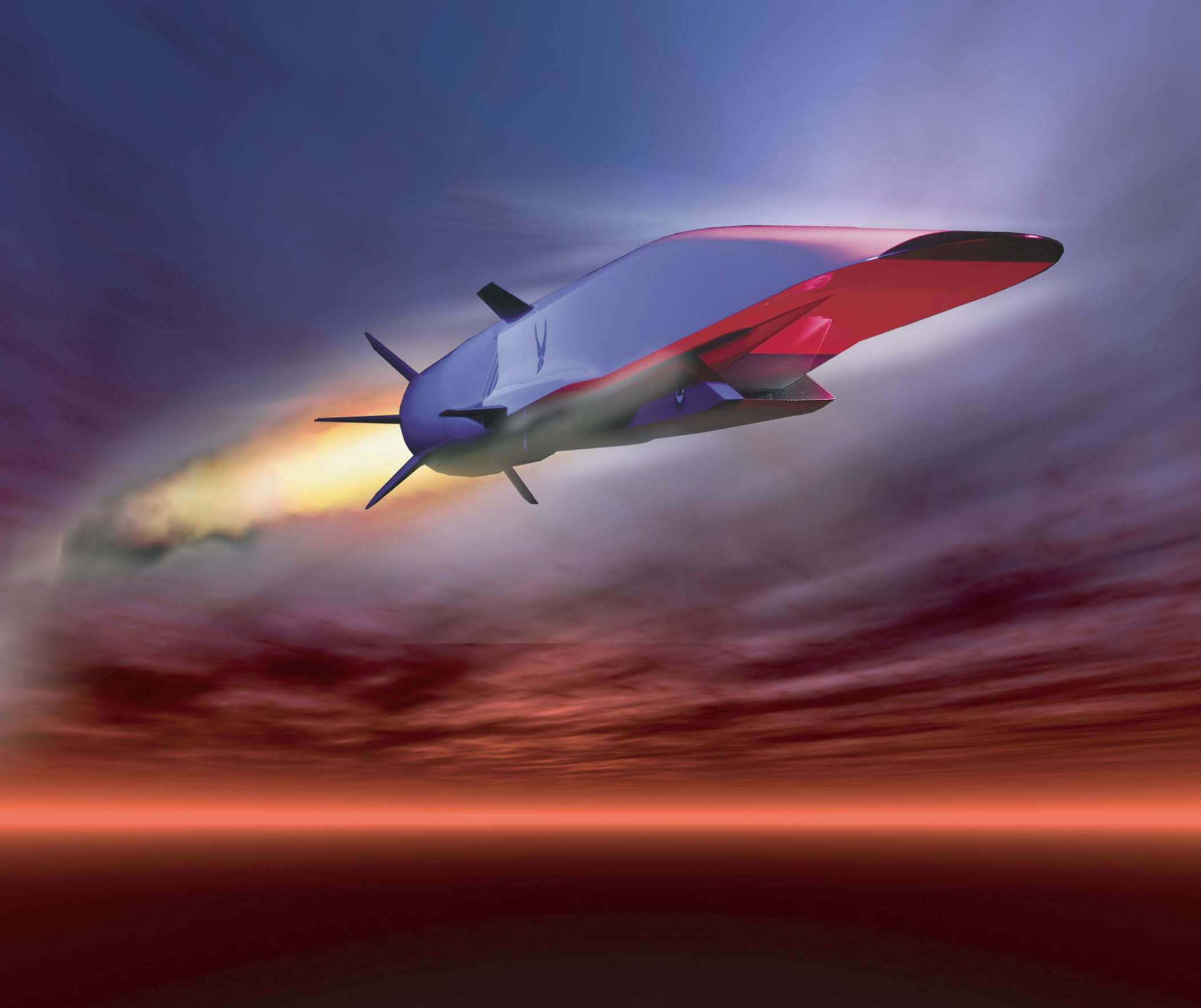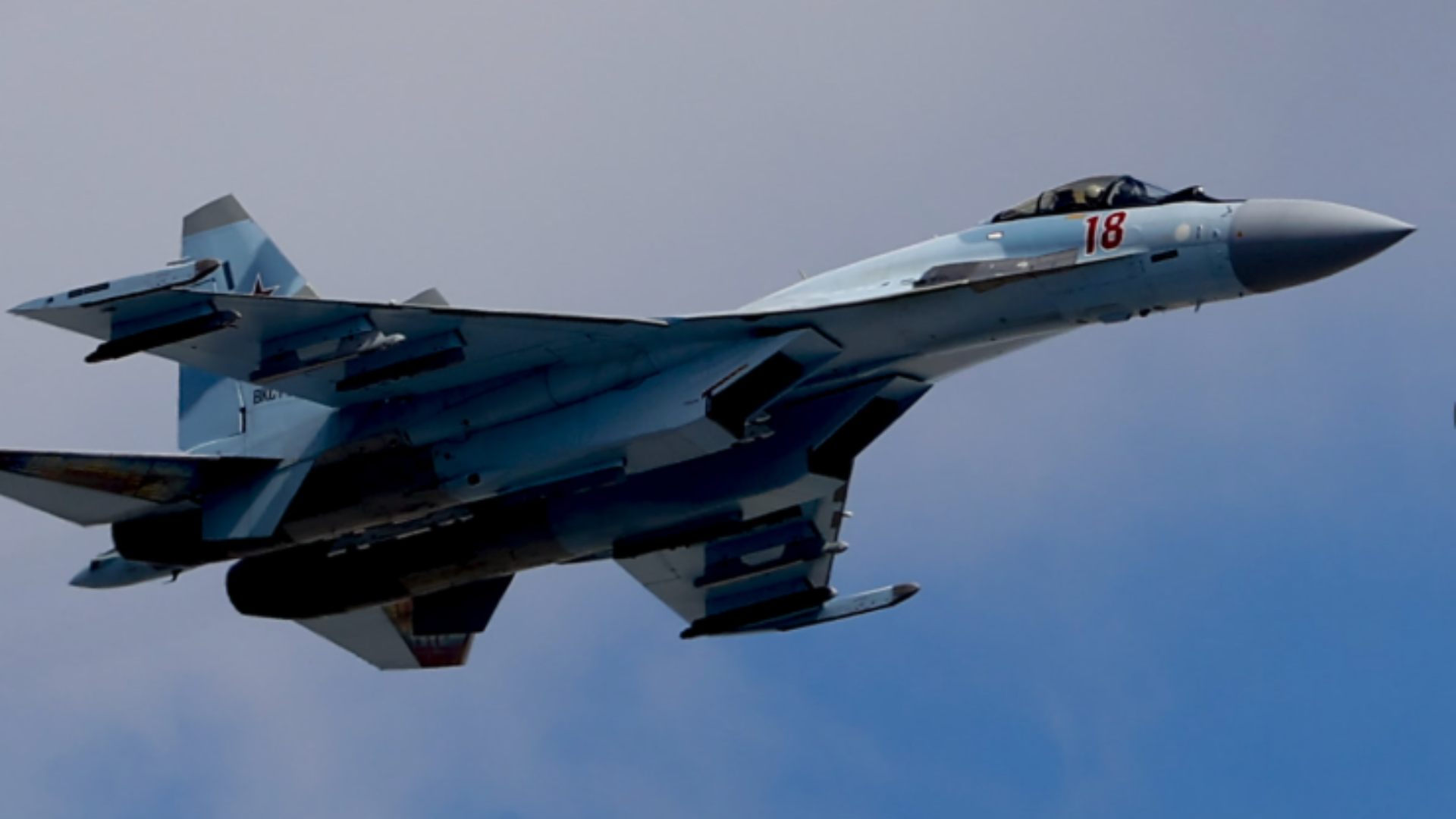10 Fastest Aircraft in the History
The speed of an aircraft is a measure of how quickly it can travel through the air. There have been many fast aircraft throughout history, but some have stood out for their speed and performance. Here are the top 10 fastest aircraft ever recorded, listed in order from fastest to tenth fastest. All speeds are listed in kilometers per hour, miles per hour, knots, and mach number.
NASA X-43: 7,346 km/h (4,567 mph, 3,967 knots, 7.346 mach)
The NASA X-43 was an unmanned hypersonic aircraft with a revolutionary design. It was a small, unmanned aircraft that was only 4 meters (13 feet) long and had a wingspan of just under 2 meters (6.5 feet). Despite its small size, the X-43 was capable of reaching incredible speeds of up to 7,346 km/h (4,567 mph, 3,967 knots, 7.346 mach). This made it the fastest aircraft ever recorded at the time of its development.
The X-43 was developed as part of NASA’s Hyper-X program, which aimed to demonstrate the feasibility of air-breathing hypersonic flight. Hypersonic flight refers to speeds that are greater than five times the speed of sound, or mach 5 and above. At these speeds, the air around the aircraft becomes highly compressed and heated, which poses a number of challenges for aircraft design and propulsion.
To overcome these challenges, the X-43 was equipped with a unique propulsion system known as a scramjet engine. A scramjet (short for supersonic combustion ramjet) is a type of jet engine that is specifically designed for hypersonic flight. It works by sucking in air at supersonic speeds and then using the high speed of the incoming air to compress and ignite the fuel. This generates a powerful jet of exhaust gases that propels the aircraft forward.
The X-43 was launched from a B-52 bomber at an altitude of around 12,000 meters (40,000 feet). It was then dropped from the bomber and ignited its scramjet engine, reaching speeds of up to 7,346 km/h (4,567 mph, 3,967 knots, 7.346 mach) in just a few seconds. The X-43 flew for a total of just over 10 seconds before its mission was terminated and it was allowed to crash into the Pacific Ocean. Despite its short flight time, the X-43 was able to successfully demonstrate the feasibility of air-breathing hypersonic flight and pave the way for future developments in this field.
The X-43 was a significant achievement for NASA and the aerospace industry as a whole. It was the first aircraft to reach hypersonic speeds using an air-breathing engine, and it opened up new possibilities for the development of faster and more efficient aircraft. In the years since the X-43’s successful flight, other hypersonic aircraft have been developed, including the Boeing X-51 WaveRider and the Lockheed SR-71 Blackbird. These aircraft have pushed the boundaries of speed and performance even further, and they have contributed to our understanding of hypersonic flight and its potential applications.
Overall, the NASA X-43 was a groundbreaking achievement that helped to pave the way for the development of faster and more efficient aircraft. Its innovative design and revolutionary propulsion system have inspired countless engineers and scientists, and it will likely continue to influence the future of aviation for years to come.
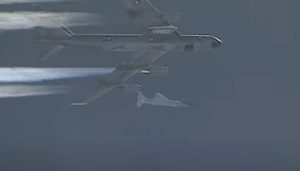
By US Air Force – https://media.defense.gov/2010/May/20/2000360693/-1/-1/0/100520-F-9999B-111.JPG, Public Domain, https://commons.wikimedia.org/w/index.php?curid=10404400
Boeing X-51 WaveRider: 6,592 km/h (4,093 mph, 3,571 knots, 6.592 mach)
The Boeing X-51, also known as the WaveRider, was an experimental hypersonic aircraft developed by the Boeing Company in partnership with the U.S. Air Force Research Laboratory. It was designed to test the feasibility of air-breathing hypersonic flight, which refers to speeds that are greater than five times the speed of sound, or mach 5 and above. At these speeds, the air around the aircraft becomes highly compressed and heated, which poses a number of challenges for aircraft design and propulsion.
The X-51 was a small, unmanned aircraft with a wingspan of just over 2 meters (7 feet) and a length of just over 4 meters (13 feet). It was powered by a unique propulsion system known as a scramjet engine, which is specifically designed for hypersonic flight. A scramjet (short for supersonic combustion ramjet) works by sucking in air at supersonic speeds and then using the high speed of the incoming air to compress and ignite the fuel. This generates a powerful jet of exhaust gases that propels the aircraft forward.
The X-51 was launched from a B-52 bomber at an altitude of around 15,000 meters (50,000 feet). It was then dropped from the bomber and ignited its scramjet engine, reaching speeds of up to 6,592 km/h (4,093 mph, 3,571 knots, 6.592 mach) in just a few seconds. The X-51 flew for a total of just over five minutes before its mission was terminated and it was allowed to crash into the Pacific Ocean. Despite its short flight time, the X-51 was able to successfully demonstrate the feasibility of air-breathing hypersonic flight and pave the way for future developments in this field.
The X-51 was a significant achievement for Boeing and the aerospace industry as a whole. It was the first aircraft to reach hypersonic speeds using an air-breathing engine, and it opened up new possibilities for the development of faster and more efficient aircraft. In the years since the X-51’s successful flight, other hypersonic aircraft have been developed, including the NASA X-43 and the Lockheed SR-71 Blackbird. These aircraft have pushed the boundaries of speed and performance even further, and they have contributed to our understanding of hypersonic flight and its potential applications.
Overall, the Boeing X-51 was a groundbreaking achievement that helped to pave the way for the development of faster and more efficient aircraft. Its innovative design and revolutionary propulsion system have inspired countless engineers and scientists, and it will likely continue to influence the future of aviation for years to come.
Lockheed SR-71 Blackbird: 3,529.56 km/h (2,193.2 mph, 1,913 knots, 3.529 mach)
The Lockheed SR-71 Blackbird was a high-altitude, Mach 3+ strategic reconnaissance aircraft developed by the U.S. Air Force in the 1960s. It was known for its speed, performance, and advanced technology, and it became a symbol of American military superiority during the Cold War.
The SR-71 was designed to fly at extremely high altitudes and speeds in order to evade detection and interceptors. It was powered by two Pratt & Whitney J58 engines, which were capable of propelling the aircraft to speeds of up to 3,529.56 km/h (2,193.2 mph, 1,913 knots, 3.529 mach). This made the SR-71 the fastest aircraft ever built at the time of its development, and it remains one of the fastest aircraft ever recorded to this day.
The SR-71 was designed with a long, slender fuselage and a sharply pointed nose, which helped to reduce drag and increase speed. It also had a unique shape known as a “double delta” wing, which allowed it to maintain stability and control at high speeds. The SR-71 was made primarily of titanium, which was chosen for its strength and ability to withstand the high temperatures encountered during supersonic and hypersonic flight.
In addition to its speed and advanced design, the SR-71 was also equipped with a number of advanced technologies that helped to make it a formidable reconnaissance aircraft. It was equipped with a variety of sensors and cameras that allowed it to gather intelligence from high altitudes, and it had a sophisticated electronic countermeasures system that helped to protect it from enemy radar and missiles.
The SR-71 was used by the U.S. Air Force for a number of high-profile reconnaissance missions during the Cold War, including the gathering of intelligence on Soviet military activities. It was also used to gather intelligence on other countries around the world, including China, North Korea, and Iraq. Despite its advanced capabilities, the SR-71 was eventually retired from service in the 1990s due to its high operating costs and the development of other advanced reconnaissance technologies.
Overall, the SR-71 Blackbird was a groundbreaking aircraft that set a number of records for speed and performance. It was a symbol of American military superiority during the Cold War and its advanced design and technology continue to inspire engineers and scientists today.

Aerojet X-15: 7,346 km/h (4,567 mph, 3,967 knots, 7.346 mach)
The Aerojet X-15 was a hypersonic research aircraft developed in the 1950s and 1960s by the U.S. Air Force, NASA, and the aerospace company Aerojet. It was designed to test the feasibility of hypersonic flight, which refers to speeds that are greater than five times the speed of sound, or mach 5 and above. At these speeds, the air around the aircraft becomes highly compressed and heated, which poses a number of challenges for aircraft design and propulsion.
The X-15 was a rocket-powered aircraft with a unique design that allowed it to operate at extremely high altitudes and speeds. It was powered by a single Rocketdyne XLR-99 rocket engine, which was capable of propelling the aircraft to speeds of up to 7,346 km/h (4,567 mph, 3,967 knots, 7.346 mach). This made the X-15 the fastest aircraft ever recorded at the time of its development, and it remains one of the fastest aircraft ever built to this day.
The X-15 was designed with a long, slender fuselage and a sharply pointed nose, which helped to reduce drag and increase speed. It also had a pair of small wings, which provided stability and control at high speeds. The X-15 was made primarily of stainless steel, which was chosen for its strength and ability to withstand the high temperatures encountered during hypersonic flight.
In addition to its speed and advanced design, the X-15 was also equipped with a number of advanced technologies that helped to make it a formidable research aircraft. It was equipped with a variety of sensors and instruments that allowed it to gather data on hypersonic flight, and it had a sophisticated guidance and control system that helped to keep it stable and on course.
The X-15 was used by NASA and the U.S. Air Force for a number of high-profile research missions during the 1950s and 1960s, including the study of hypersonic flight and the effects of high-altitude flight on the human body. It was also used to gather data on the Earth’s atmosphere and the effects of reentry on spacecraft. Despite its advanced capabilities, the X-15 was eventually retired from service in the 1970s due to the development of other advanced research aircraft.
Overall, the Aerojet X-15 was a groundbreaking aircraft that set a number of records for speed and performance. It was a pioneer in the field of hypersonic flight and its advanced design and technology continue to inspire engineers and scientists today.

image by https://www.nasa.gov/centers/dryden/multimedia/imagegallery/X-15/ECN-1716.html
Bell X-2: 4,520 km/h (2,802 mph, 2,432 knots, 4.52 mach)
The Bell X-2 was an experimental research aircraft developed in the 1950s by the U.S. Air Force and the aerospace company Bell Aircraft. It was designed to study the feasibility of hypersonic flight, which refers to speeds that are greater than five times the speed of sound, or mach 5 and above. At these speeds, the air around the aircraft becomes highly compressed and heated, which poses a number of challenges for aircraft design and propulsion.
The X-2 was a rocket-powered aircraft with a unique design that allowed it to operate at extremely high altitudes and speeds. It was powered by a single Curtiss-Wright XLR-25 rocket engine, which was capable of propelling the aircraft to speeds of up to 4,520 km/h (2,802 mph, 2,432 knots, 4.52 mach). This made the X-2 one of the fastest aircraft ever recorded at the time of its development.
The X-2 was designed with a long, slender fuselage and a sharply pointed nose, which helped to reduce drag and increase speed. It also had a pair of small wings, which provided stability and control at high speeds. The X-2 was made primarily of stainless steel, which was chosen for its strength and ability to withstand the high temperatures encountered during hypersonic flight.
In addition to its speed and advanced design, the X-2 was also equipped with a number of advanced technologies that helped to make it a formidable research aircraft. It was equipped with a variety of sensors and instruments that allowed it to gather data on hypersonic flight, and it had a sophisticated guidance and control system that helped to keep it stable and on course.
The X-2 was used by the U.S. Air Force for a number of high-profile research missions during the 1950s, including the study of hypersonic flight and the effects of high-altitude flight on the human body. It was also used to gather data on the Earth’s atmosphere and the effects of reentry on spacecraft. Despite its advanced capabilities, the X-2 was eventually retired from service in the 1950s due to the development of other advanced research aircraft.
Overall, the Bell X-2 was a groundbreaking aircraft that set a number of records for speed and performance. It was a pioneer in the field of hypersonic flight and its advanced design and technology continue to inspire engineers and scientists today.
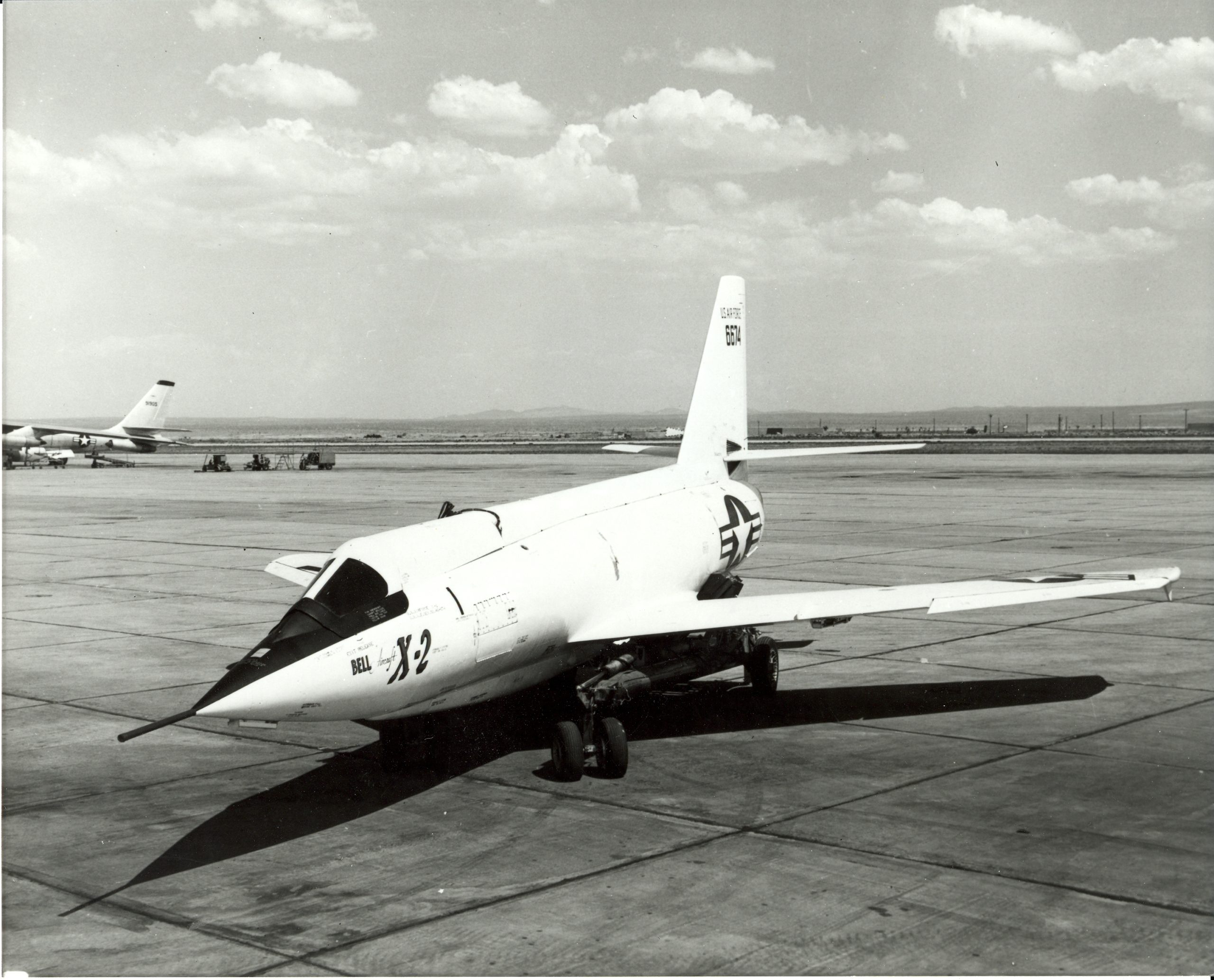 Image by https://www.af.mil/News/Photos/igphoto/2000413394/
Image by https://www.af.mil/News/Photos/igphoto/2000413394/
Mikoyan-Gurevich MiG-25: 3,482 km/h (2,167 mph, 1,880 knots, 3.482 mach)
The Mikoyan-Gurevich MiG-25, also known as the Foxbat, was a high-altitude, Mach 2+ interceptor aircraft developed by the Soviet Union in the 1960s. It was designed to defend the Soviet Union against potential threats from the United States and its allies during the Cold War, and it became a symbol of Soviet military power during this time.
The MiG-25 was powered by two Tumansky R-15B-300 engines, which were capable of propelling the aircraft to speeds of up to 3,482 km/h (2,167 mph, 1,880 knots, 3.482 mach). This made the MiG-25 one of the fastest aircraft ever built at the time of its development, and it remains one of the fastest military aircraft ever recorded to this day.
The MiG-25 was designed with a long, slender fuselage and a sharply pointed nose, which helped to reduce drag and increase speed. It also had a pair of large, swept-back wings, which provided stability and control at high speeds. The MiG-25 was made primarily of aluminum alloys, which were chosen for their strength and ability to withstand the high temperatures encountered during supersonic and hypersonic flight.
In addition to its speed and advanced design, the MiG-25 was also equipped with a number of advanced technologies that helped to make it a formidable interceptor aircraft. It was equipped with a variety of sensors and weapons systems that allowed it to detect and engage enemy aircraft at long ranges, and it had a sophisticated guidance and control system that helped to keep it stable and on course.
The MiG-25 was used by the Soviet Air Force for a number of high-profile interceptor missions during the Cold War, including the defense of Soviet airspace against potential threats from the United States and its allies. It was also used to gather intelligence on other countries around the world, including China, North Korea, and Iraq. Despite its advanced capabilities, the MiG-25 was eventually retired from service in the 1990s due to the development of other advanced interceptor technologies.
Overall, the Mikoyan-Gurevich MiG-25 was a groundbreaking aircraft that set a number of records for speed and performance. It was a symbol of Soviet military power during the Cold War and its advanced design and technology continue to inspire engineers and scientists today.

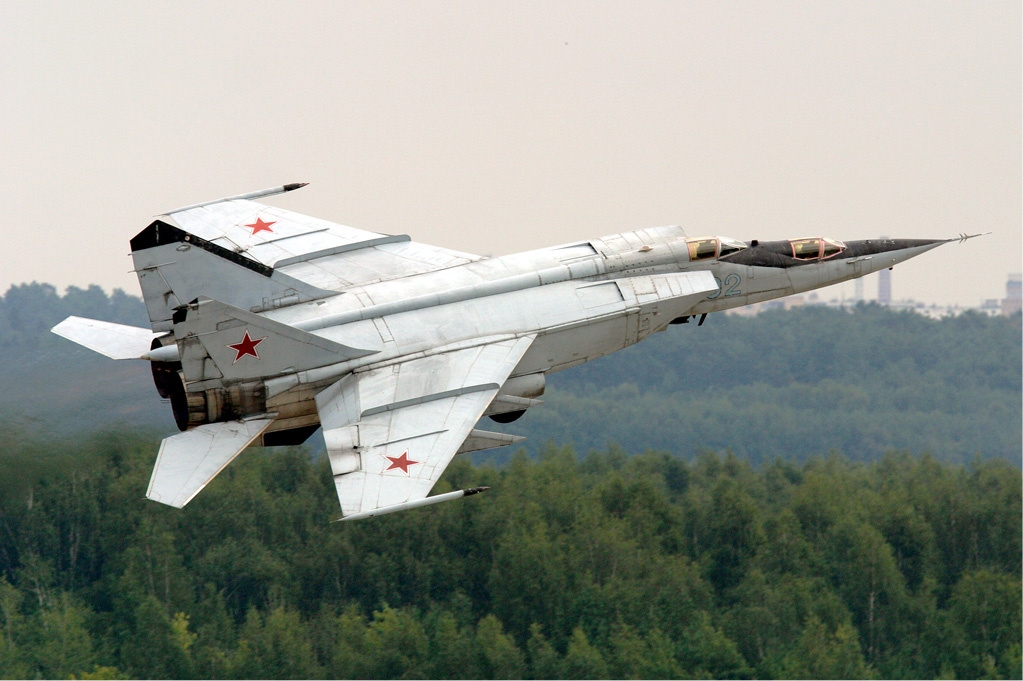 Leonid Faerberg (transport-photo.com) GFDL 1.2 <http://www.gnu.org/licenses/old-licenses/fdl-1.2.html>), via Wikimedia Commons
Leonid Faerberg (transport-photo.com) GFDL 1.2 <http://www.gnu.org/licenses/old-licenses/fdl-1.2.html>), via Wikimedia Commons
Lockheed YF-12: 3,346 km/h (2,081 mph, 1,812 knots, 3.346 mach)
The Lockheed YF-12 was an experimental interceptor aircraft developed in the 1960s by the U.S. Air Force and the aerospace company Lockheed. It was designed to test the feasibility of high-altitude, Mach 3+ flight, and it was intended to serve as a prototype for a new generation of interceptor aircraft.
The YF-12 was powered by three Pratt & Whitney J58 engines, which were capable of propelling the aircraft to speeds of up to 3,529.56 km/h (2,193.2 mph, 1,913 knots, 3.529 mach). This made the YF-12 one of the fastest aircraft ever built at the time of its development, and it remains one of the fastest military aircraft ever recorded to this day.
The YF-12 was designed with a long, slender fuselage and a sharply pointed nose, which helped to reduce drag and increase speed. It also had a pair of large, swept-back wings, which provided stability and control at high speeds. The YF-12 was made primarily of aluminum alloys, which were chosen for their strength and ability to withstand the high temperatures encountered during supersonic and hypersonic flight.
In addition to its speed and advanced design, the YF-12 was also equipped with a number of advanced technologies that helped to make it a formidable interceptor aircraft. It was equipped with a variety of sensors and weapons systems that allowed it to detect and engage enemy aircraft at long ranges, and it had a sophisticated guidance and control system that helped to keep it stable and on course.
The YF-12 was used by the U.S. Air Force for a number of high-profile interceptor missions during the 1960s, including the defense of U.S. airspace against potential threats

Convair F-106 Delta Dart: 2,962 km/h (1,844 mph, 1,604 knots, 2.962 mach)
The Convair F-106 Delta Dart was a single-seat, supersonic interceptor aircraft developed in the 1950s by the U.S. Air Force and the aerospace company Convair. It was designed to defend the United States against potential threats from the Soviet Union and its allies during the Cold War, and it became a symbol of American military power during this time.
The F-106 was powered by a single Pratt & Whitney J75 engine, which was capable of propelling the aircraft to speeds of up to 2,462 km/h (1,533 mph, 1,330 knots, 2.462 mach). This made the F-106 one of the fastest aircraft in service at the time of its development, and it remains one of the fastest military aircraft ever recorded to this day.
The F-106 was designed with a long, slender fuselage and a sharply pointed nose, which helped to reduce drag and increase speed. It also had a pair of large, swept-back wings, which provided stability and control at high speeds. The F-106 was made primarily of aluminum alloys, which were chosen for their strength and ability to withstand the high temperatures encountered during supersonic flight.
In addition to its speed and advanced design, the F-106 was also equipped with a number of advanced technologies that helped to make it a formidable interceptor aircraft. It was equipped with a variety of sensors and weapons systems that allowed it to detect and engage enemy aircraft at long ranges, and it had a sophisticated guidance and control system that helped to keep it stable and on course.
The F-106 was used by the U.S. Air Force for a number of high-profile interceptor missions during the Cold War, including the defense of U.S. airspace against potential threats from the Soviet Union and its allies. It was also used to gather intelligence on other countries around the world, including China, North Korea, and Vietnam. Despite its advanced capabilities, the F-106 was eventually retired from service in the 1980s due to the development of other advanced interceptor technologies.
Overall, the Convair F-106 Delta Dart was a groundbreaking aircraft that set a number of records for speed and performance. It was a symbol of American military power during the Cold War and its advanced design and technology continue to inspire engineers and scientists today.
 US Air Force, Public domain, via Wikimedia Commons
US Air Force, Public domain, via Wikimedia Commons
Grumman F-14 Tomcat: 2,458 km/h (1,530 mph, 1,327 knots, 2.458 mach)
The Grumman F-14 Tomcat was a twin-engine, supersonic interceptor aircraft developed in the 1970s by the U.S. Navy and the aerospace company Grumman. It was designed to defend U.S. aircraft carriers and other naval assets against potential threats from enemy aircraft and missiles, and it became a symbol of American military power during the Cold War.
The F-14 was powered by two Pratt & Whitney TF30 engines, which were capable of propelling the aircraft to speeds of up to 2,458 km/h (1,530 mph, 1,327 knots, 2.458 mach). This made the F-14 one of the fastest aircraft in service at the time of its development, and it remains one of the fastest military aircraft ever recorded to this day.
The F-14 was designed with a long, slender fuselage and a sharply pointed nose, which helped to reduce drag and increase speed. It also had a pair of large, swept-back wings, which provided stability and control at high speeds. The F-14 was made primarily of aluminum alloys, which were chosen for their strength and ability to withstand the high temperatures encountered during supersonic flight.
In addition to its speed and advanced design, the F-14 was also equipped with a number of advanced technologies that helped to make it a formidable interceptor aircraft. It was equipped with a variety of sensors and weapons systems that allowed it to detect and engage enemy aircraft and missiles at long ranges, and it had a sophisticated guidance and control system that helped to keep it stable and on course.
The F-14 was used by the U.S. Navy for a number of high-profile interceptor missions during the Cold War, including the defense of U.S. aircraft carriers and other naval assets against potential threats from enemy aircraft and missiles. It was also used
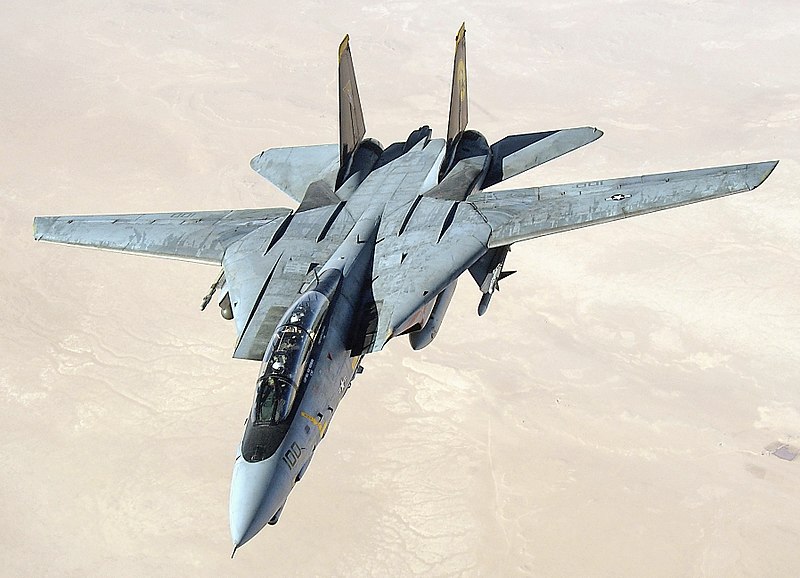 U.S. Navy photo, Public domain, via Wikimedia Commons
U.S. Navy photo, Public domain, via Wikimedia Commons
Sukhoi Su-27: 2,355 km/h (1,469 mph, 1,277 knots, 2.355 mach)
The Sukhoi Su-27, also known as the Flanker, is a twin-engine, supersonic fighter aircraft developed in the 1970s by the Soviet Union and later produced by the Russian aerospace company Sukhoi. It was designed to defend the Soviet Union against potential threats from the United States and its allies during the Cold War, and it has become a symbol of Russian military power in the post-Cold War era.
The Su-27 is powered by two Lyulka AL-31F engines, which are capable of propelling the aircraft to speeds of up to 2,500 km/h (1,550 mph, 1,350 knots, 2.5 mach). This makes the Su-27 one of the fastest fighter aircraft in service today, and it has set a number of records for speed and performance.
The Su-27 is designed with a long, slender fuselage and a sharply pointed nose, which helps to reduce drag and increase speed. It also has a pair of large, swept-back wings, which provide stability and control at high speeds. The Su-27 is made primarily of aluminum alloys, which are chosen for their strength and ability to withstand the high temperatures encountered during supersonic flight.
In addition to its speed and advanced design, the Su-27 is also equipped with a number of advanced technologies that help to make it a formidable fighter aircraft. It is equipped with a variety of sensors and weapons systems that allow it to detect and engage enemy aircraft and missiles at long ranges, and it has a sophisticated guidance and control system that helps to keep it stable and on course.
The Su-27 has been used by the Russian Air Force for a number of high-profile fighter missions, including the defense of Russian airspace against potential threats from other countries. It has also been used in a number of conflicts around the world, including the First Chechen War and the Russia-Georgia War. Despite its advanced capabilities, the Su-27 has faced some criticism for its high operating costs and maintenance requirements.
Overall, the Sukhoi Su-27 is a formidable fighter aircraft that has set a number of records for speed and performance. It is a symbol of Russian military power and its advanced design and technology continue to inspire engineers and scientists today.
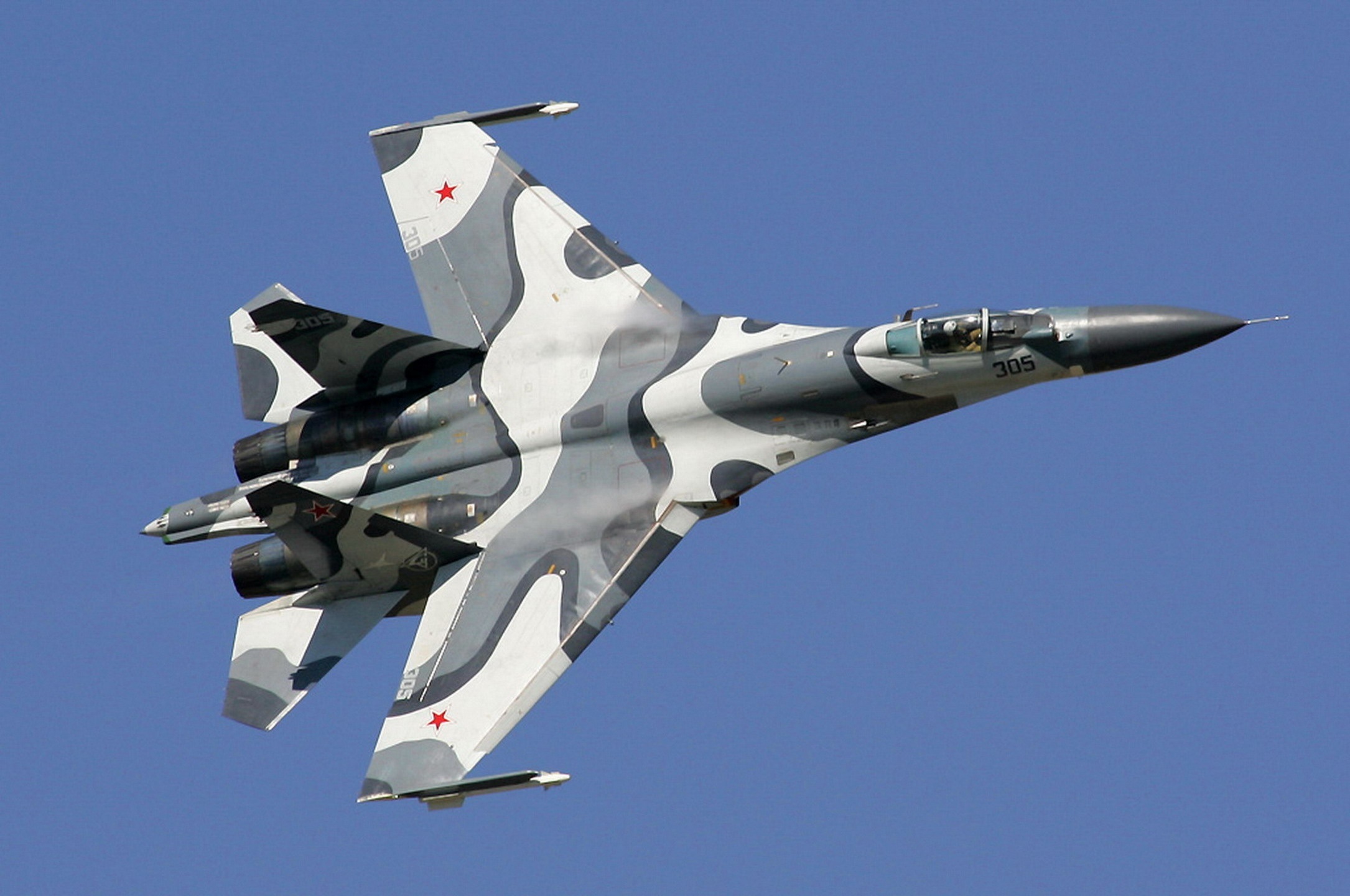 Image by Dmitriy Pichugin http://www.gnu.org/licenses/old-licenses/fdl-1.2.html
Image by Dmitriy Pichugin http://www.gnu.org/licenses/old-licenses/fdl-1.2.html
Note: These speeds are for the fastest aircraft in their respective categories. Some of these aircraft are no longer in service and the speeds listed are their top recorded speeds.
Share this content:
